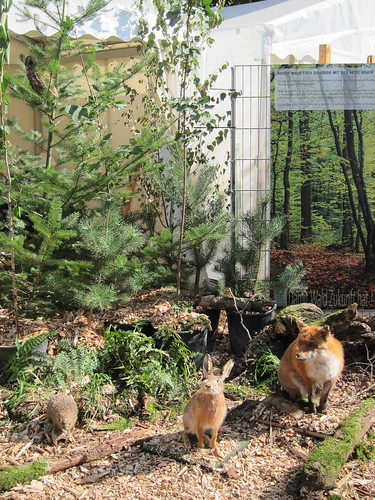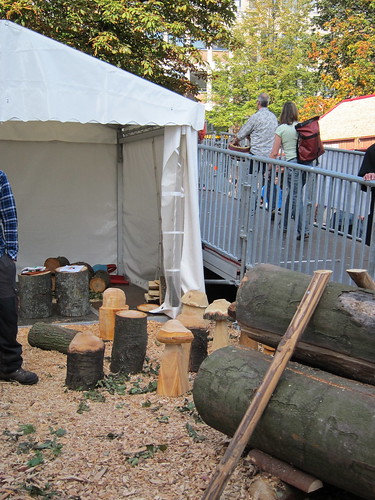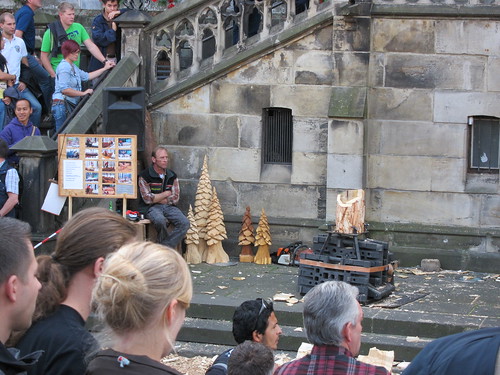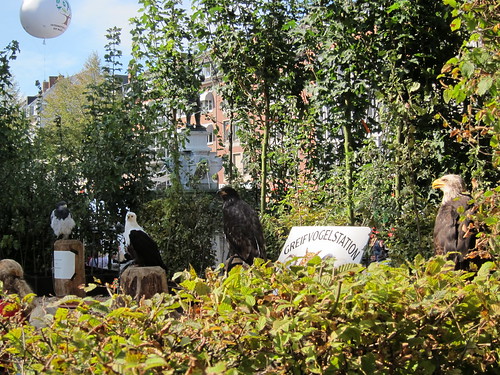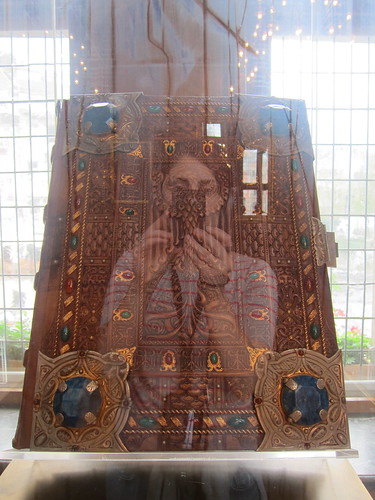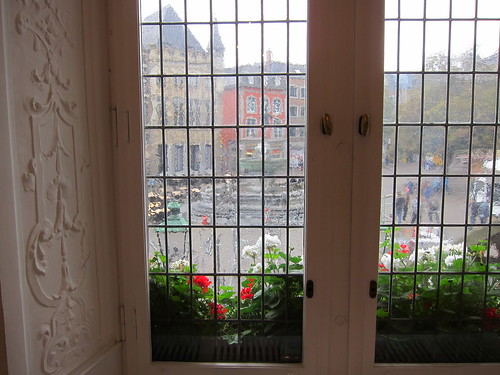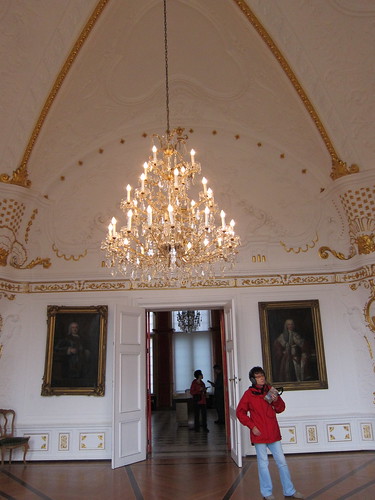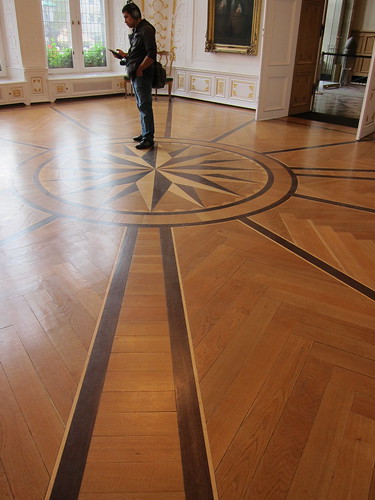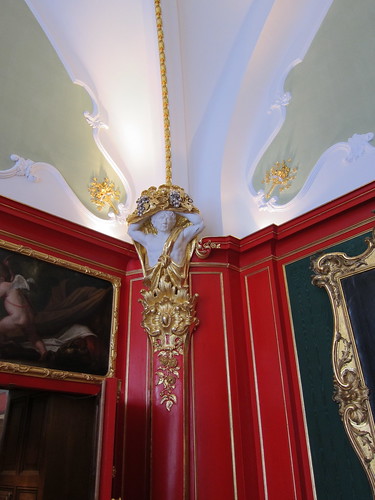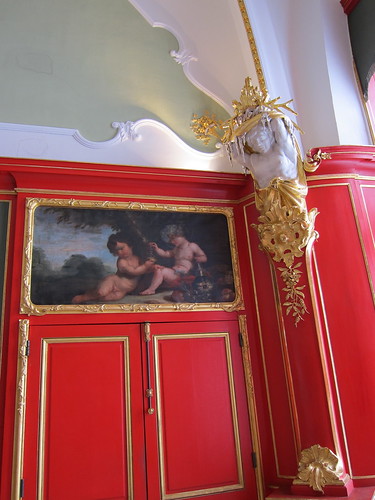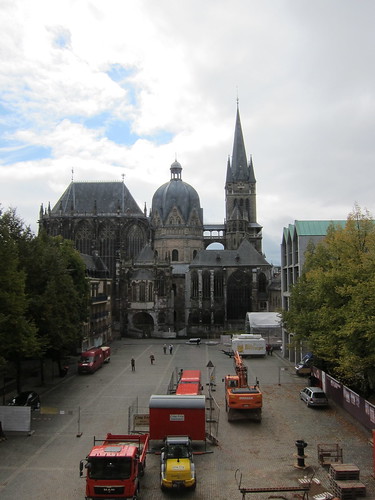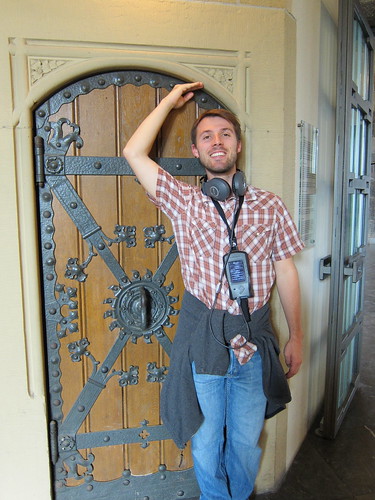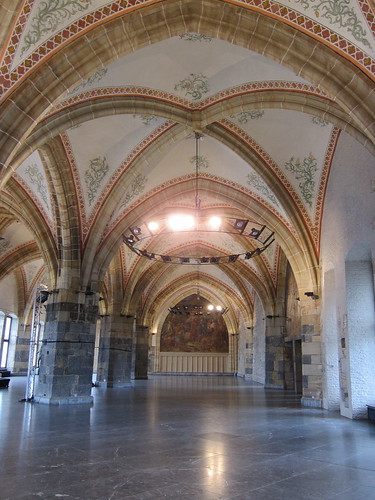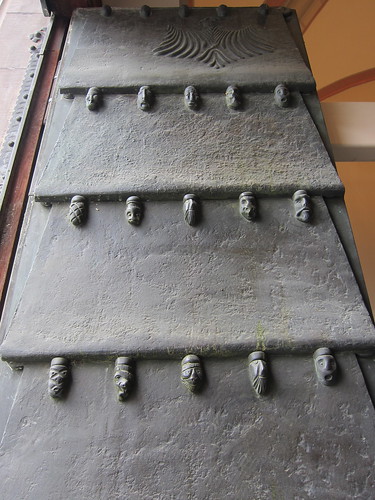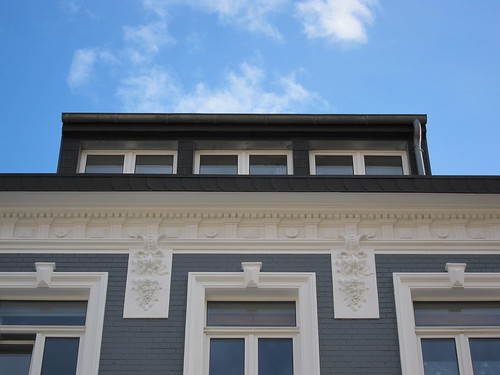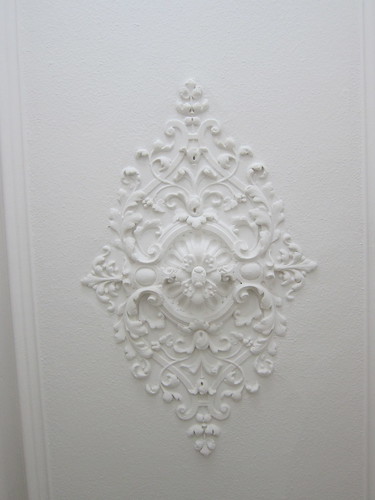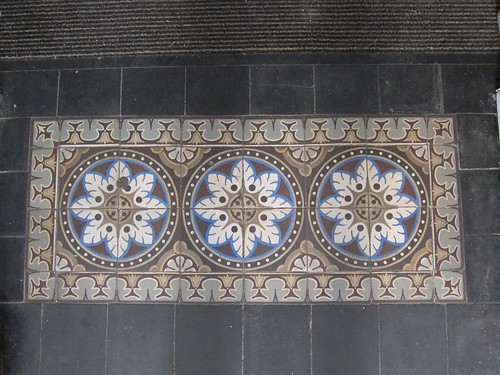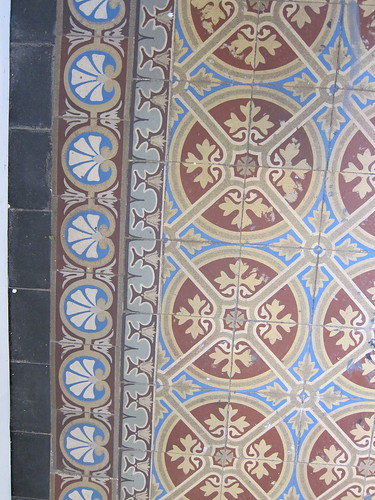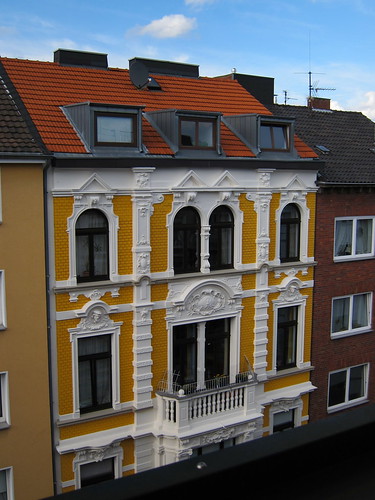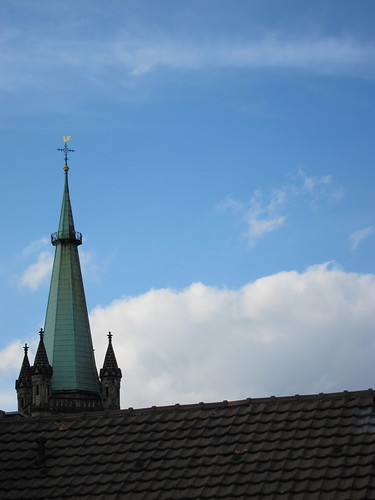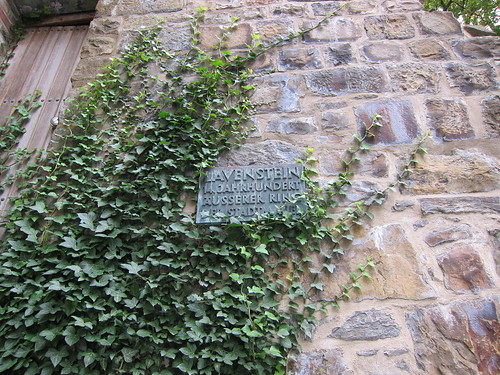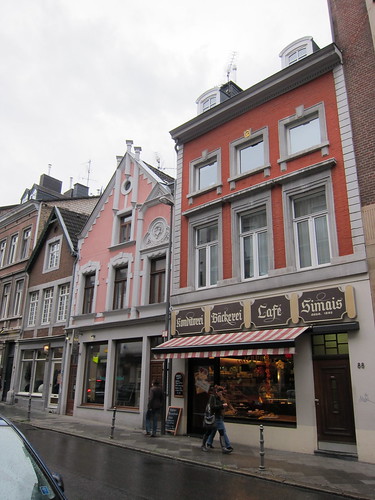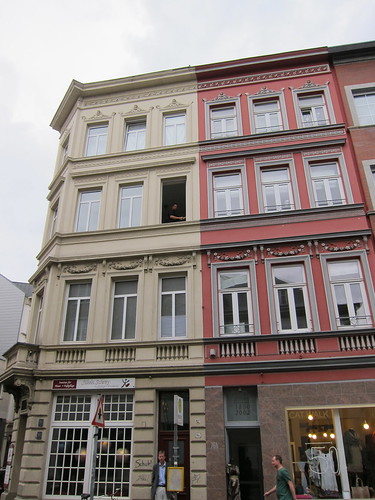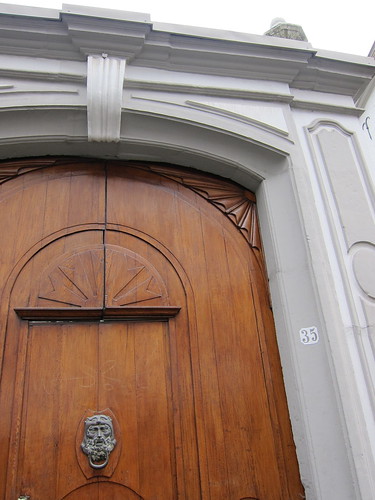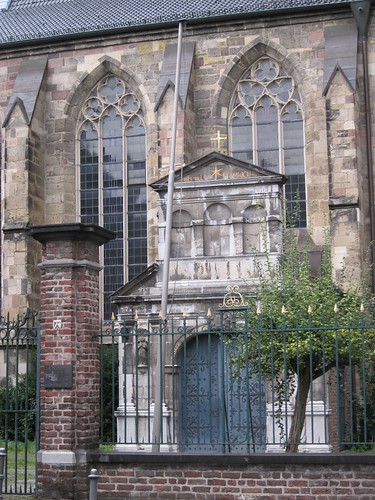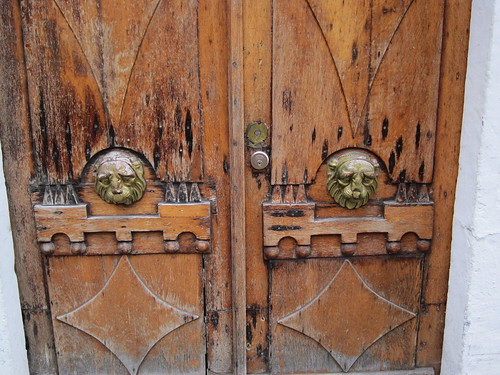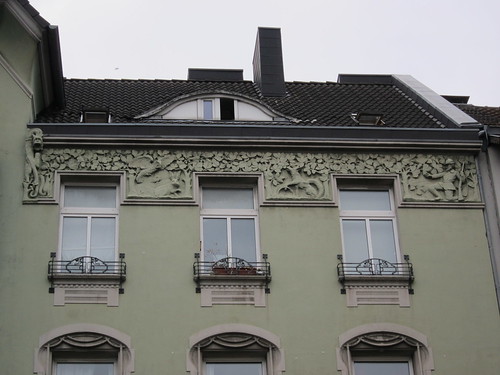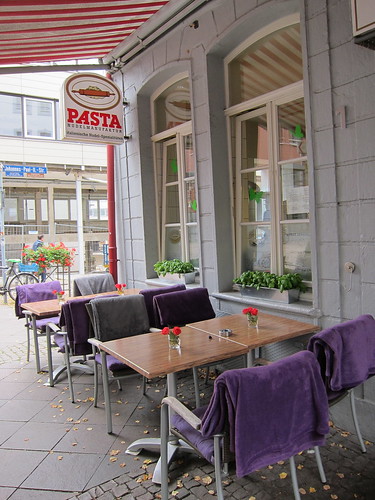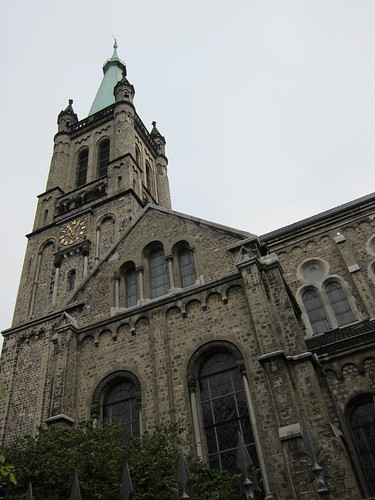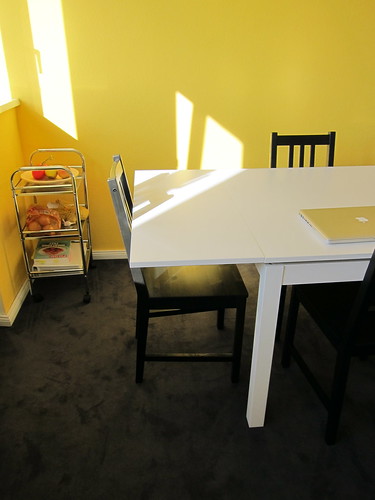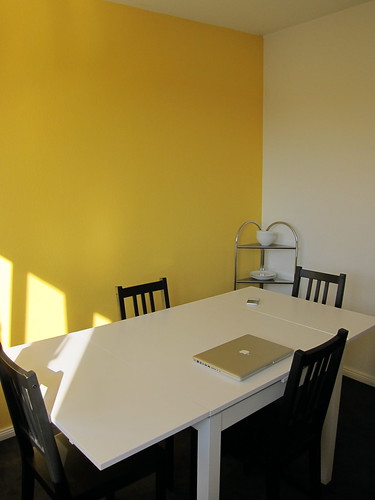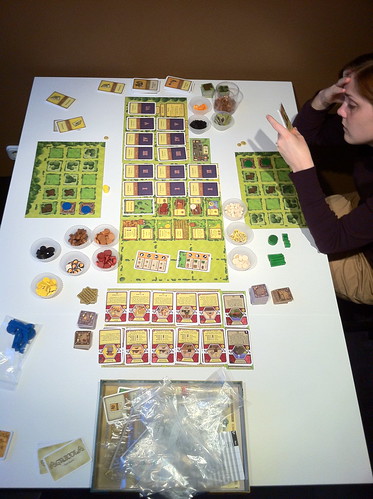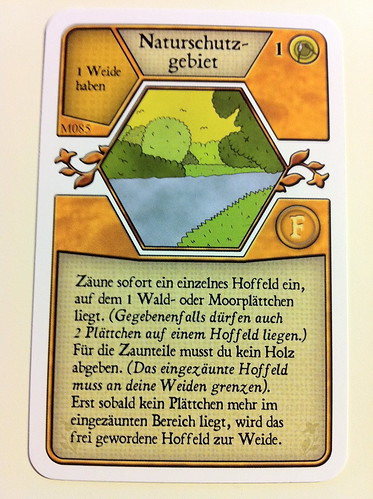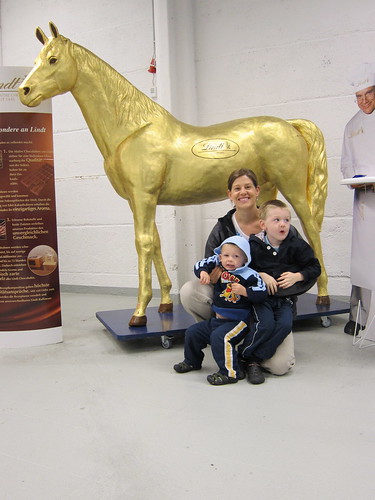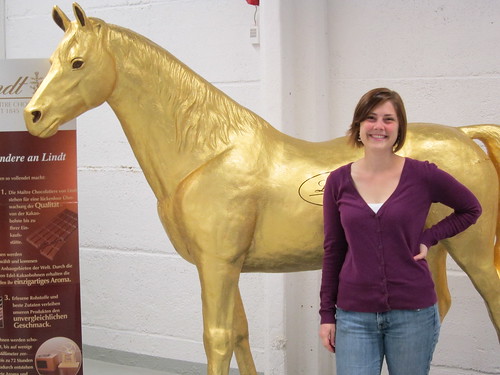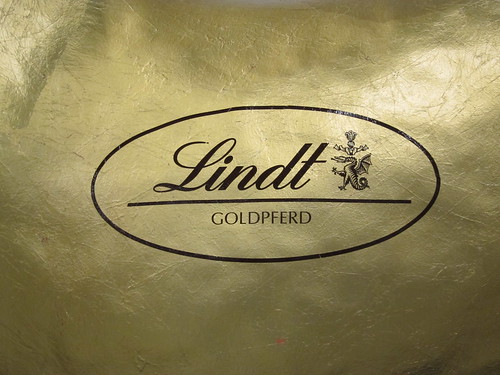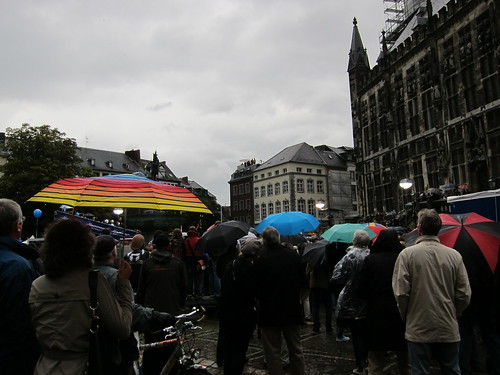If you've spoken on the Skype with us in the past few days, you probably know that, linguistically, we feel like we're about three years old. Maybe three-and-a-half. Though the Alexander von Humboldt Foundation very generously paid for two months of German courses for both of us, and though we generally understand German well (both spoken and written), we're still slow at it and can't say much beyond what we want for dinner. (You're not surprised that we do well with food, are you?)
You may be wondering how a super genius like Sara and a moderately intelligent Tyler can struggle so much with communication? Of course, primarily it's that we've been here only 83 days. However, to make the case even more, here are Ten Things I Hate-or-Find-Mildly-Amusing About You, German Language, from the eyes of a Linguistic Three-Year-Old. (Warning: there is a fair bit of grammar in this post. If you want, you can just read the words in bold, then leave a comment that uses the word "Sparschwein" and I'll think that you read the whole thing in great detail.)
1.
Your nouns have three genders. In English, when we talk about a book, a city, or a dog, their articles are all treated equally: "a" or "the." Not so in German. They like to have some nouns that are masculine ("der Hund"--the dog), some that are feminine ("die Stadt"--the city), and some that are even neuter ("das Buch"--the book). Now, that by itself wouldn't be so bad, but it's ridiculous when coupled with...
2.
The gender of your nouns is often assigned arbitrarily. For example, while it's logical that a man is a masculine noun (der Mann) and a woman is feminine (die Frau), would you believe that a girl is neuter (das Mädchen)? Also, can someone tell me why country and city are neuter and feminine, respectively? ("Das Land" and "die Stadt.") Some rules would be appreciated. (To be fair, there are a few rules, like -e nouns are usually feminine, -chen nouns are always neuter (see "das Mädchen"), and -ung nouns are always feminine, but it just doesn't cut it in all cases, and Sara and I are often asking each other, "Das Hund? Die Hund? Der Hund? Wie heißt das?")
3.
Your numbers are all backwards. While in English we say "twenty-three", German uses the form "three-and-twenty." Also, the twenty-first of September is the "one-and-twentieth of September." We're actually getting pretty good at this one, and laugh when people at grocery stores (or, let's be honest, pastry shops) try to speak in English to us foreigners and tell us that our EUR 2.95 bill comes to two euros and fifty-nine cents.
4.
Your adjectives are crazy. In English, blue is blue and big is big and they never really change. In German, the adjectives change to match the gender of the noun AND the position of the adjective with respect to the noun and the article. If that's confusing to you, take heart! It's kills us, too. That's why I can't write more about it. (Sara gets it okay, I think. Maybe she can chime in.)
 |
| Die Sparschwein? Der Sparschwein? Sara, wie heißt das?* |
5.
You have crazy (and sometimes pretty cool) compound words. Germans love to smash words together to make new, really long words with new meanings. Take "Arm" (arm) and "Band" (band) and smash them together and you get "Armband" (armband). Take "Uhr" (clock) and throw it on there and you get "Armbanduhr", wristwatch. To that you can add "Zeiger" (hand or pointer) and get "Armbanduhrzeiger", the hand on a wristwatch. And so on. It's not too hard, actually, and it's pretty fun. Our current favorite is a word I found in the ads the other day--Sparschwein. The verb "sparen" means to save (as in money) and "Schwein" is a pig, so "Sparschwein" is a saving pig--a piggy bank! I like to think of it more religiously, though: the pig that saves.
6.
You do weird things when it comes to possessive articles. Take for example the simple word "his." His book, his story, his hair--all "his". Of course, in English we have also "hers" and "its", mimicking the gender structure of German (masculine, feminine, and neuter). However, in German the possessive article not only depends on the gender of the possessor, but also on that of the possessee. So, while "his book" and "her book" are "sein Buch" and "ihr Buch", respectively, "his coin" and "her coin" are "sein
e Münze" and "ihr
e Münze", respectively. (Notice the addition of the "e" on the end.) This gets particularly messy when you throw in...
7.
You have cases. Okay, my background in Lithuanian led me to completely overlook this particular point of grammar, but it is difficult. Take the English sentences:
I throw the dog to him.
He throws the dog to me.
I throw him to the dog.
The dog throws me to him.
Each of those has a subject (the person doing the throwing), a direct object (the thing being thrown), and an indirect object (the person to whom the direct object is being thrown). In German (and Lithuanian), each of those grammatical roles, subject, direct object, and indirect object, requires a different case, meaning that the noun changes for each role. (More precisely, in German the descriptors that surround the noun, like articles and adjectives, change. In contrast, Lithuanian nouns themselves change in different cases.) So, our four original sentences are, in German:
Ich werfe ihm den Hund.
Er wirft mir den Hund.
Ich werfe ihn dem Hund.
Der Hund wirft ihm mich.
It's all very simple, really.
8.
You are completely ridiculous with your plurals. There are about 117 ways of making a singular noun plural, and there is really no way to guess. "Stadt" becomes "Städte", "Buch" becomes "Bücher", and "Hund" becomes "Hunde." Sometimes you get an umlaut (z.B., "ü"), sometimes you get an "e," and sometimes you get an "s." But use like Forrest Gump taught us, you never know
what you're going to get.
9.
Your prepositions act strangely. Sometimes when you're doing something, like getting a pizza
to go, you need a preposition, "zu." (That's
mitzunehmen, by the way.) Sometimes you don't. But we don't know quite when. There are also prepositions that mean either a location or a movement, depending on the case of the noun that follows. And sometimes prepositions are indistinguishable from verb prefixes, so you get a giant mix of crazy, three-letter words that all get strung together to mean something. Usually it means that I'm about to use a crazy mix of four-letter words.
10.
Your verbs get crazy with prefixes. Lots of people told us that German was weird because the verb comes at the end of the sentence. That's not really true, and it's not hard to deal with. (Note: in sentences with multiple verbs, one will usually come at the end, and it can be a little tricky, but it's not too bad overall. Think about "I'd like you to leave." "To leave" comes at the end and it's perfectly understandable and relatively easy.) The hard part is verbs with prefixes. For example, "einwerfen" (to throw in), used often when talking about people "throwing ads" into the mailboxes. Or "mitarbeiten", to work together. When those verbs are used in a sentence, for example "I throw the mail in the box" or "Let's work together!", the prefix comes off and goes at the end, producing "Ich werfe ein" and "Arbeiten wir mit!" Often it's not too terrible, since "werfen" and "einwerfen" are pretty close in meaning, as are "arbeiten" and "mitarbeiten". However, sometimes it's a real pain. For example, "nehmen" means to take, and "teilnehmen" means to share. So imagine you hear a mother telling her older daughter to share the toy with her brother. You'd hear, "Nimmt das Spielzeug mit deinem Bruder teil." (Or something like that.) Until the last syllable, you're thinking, "Take that toy with your brother... huh? what?". Then the last word "teil" comes and you realize that it's a totally different sentence. So you go back to the beginning, "'SHARE the toy with your brother!' It's so clear now." At which point you're three sentences behind in your conversation.
All that said, we really like the language. It has plenty of ways to play around and to be expressive in ways that one can't in English, and it sounds pretty cool. For example, "city hall" is kind of boring, but "das Rathaus?" Now there's the place I want my municipal government to work. Hopefully, by the time you read this we'll already be speaking much better and will be exceptional, English AND German (and Spanish and Lithuanian) speaking tour guides for your visit!
*It's actually "das Sparschwein." Sara was asleep, so I looked it up.

